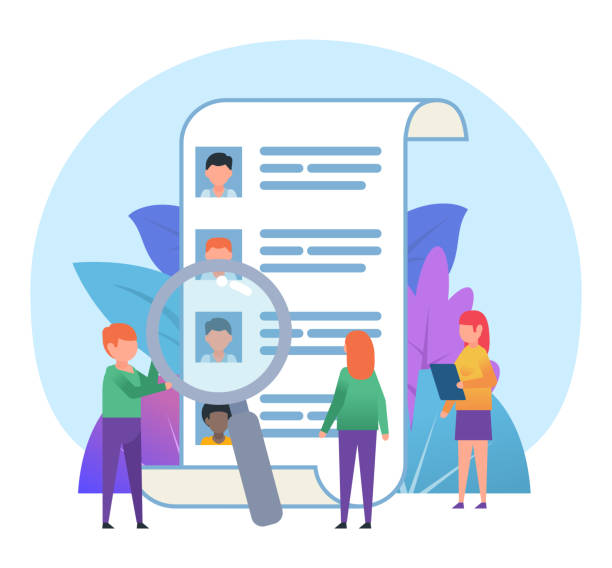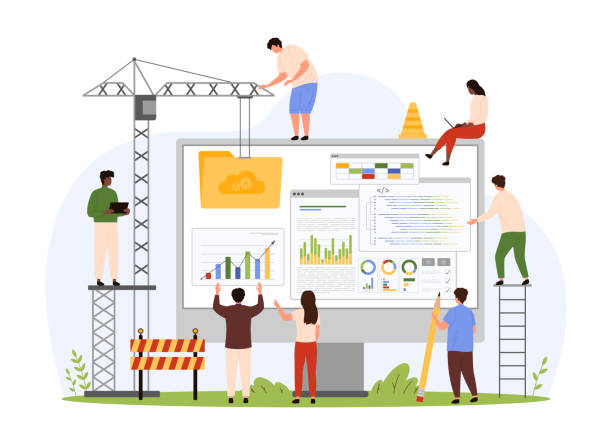The Importance of Multilingual Website Design in Today’s World

In the era of globalization, reaching international audiences is crucial for any business.
This is where the importance of #multilingual_website_design reaches its peak.
A multilingual website not only removes geographical boundaries but also enables businesses to speak in the local language of their audience, which in turn leads to increased trust and customer loyalty.
Research shows that most users prefer to buy products and services from websites offered in their native language, even if they are proficient in another language.
This is not only a competitive advantage but also a necessity for #business_development in global markets.
The process of multilingual website design goes beyond mere content translation; it involves complete localization, where cultural nuances, currencies, units, and even date and time formats are considered.
This comprehensive approach significantly improves the user experience and makes users feel more comfortable and understand your content better.
Have you ever wondered how a successful website can resonate across different cultures? The answer lies in careful attention to these localization details.
Multilingual website design helps you convey your message correctly and respectfully to different cultures, which is crucial for preventing cultural misunderstandings and increasing conversion rates.
This is a strategic investment that will yield significant returns in the long run and put you on the path to international growth.
Disappointed with your e-commerce site’s low conversion rate? RasawWeb transforms your e-commerce site into a powerful tool for attracting and converting customers!
✅ Significantly increase visitor-to-buyer conversion rates
✅ Unparalleled user experience to boost customer satisfaction and loyalty⚡ Get a free consultation from RasawWeb!
Challenges and Solutions of Multilingual Website Design
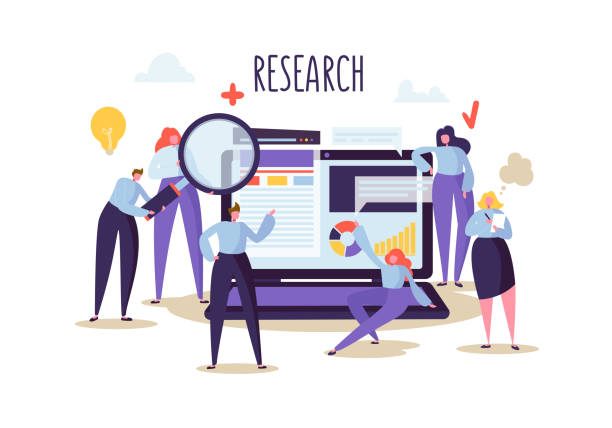
Multilingual website design comes with unique challenges that need to be addressed carefully.
One of the biggest challenges is content and translation management.
Maintaining the quality and consistency of content across multiple languages requires a strong strategy and appropriate tools.
Mere word-for-word translation is not enough; content must also be culturally and semantically localized to be appealing to the target audience.
This includes adapting idioms, proverbs, and even humor, which may vary across different cultures.
For example, a joke popular in one culture might be meaningless or even offensive in another.
Therefore, collaboration with native translators and localization experts who are fully familiar with the target cultures is essential.
Another challenge relates to SEO optimization for multilingual websites.
How can search engines identify and index different language versions of a page? Proper use of hreflang tags, appropriate URL structure (such as subdomains, subfolders, or country-code top-level domains), and a precise international SEO strategy are among the solutions.
Also, ensuring that website loading speed is optimized in various geographical regions can be managed using a CDN (Content Delivery Network) and local servers.
Overcoming these challenges requires careful planning, the use of appropriate tools, and collaboration with specialized teams.
Successful multilingual website design means anticipating and solving these challenges before they occur, to provide a flawless experience for global users and contribute to sustainable business growth.
Technologies and Tools Required for Multilingual Websites

To implement efficient multilingual website design, selecting the right technologies and tools is of utmost importance.
A Content Management System (CMS) is one of the most crucial choices.
CMSs like WordPress with plugins like WPML or Polylang, Joomla, or Drupal, which have built-in multilingual capabilities or powerful plugins, are popular choices.
These platforms allow you to easily manage and organize translated content, which is vital for maintaining consistency and updating content across multiple languages.
Alongside CMS, Translation Management Systems (TMS) play a key role.
These tools help automate the translation process, enable collaboration between different translation teams, and maintain Translation Memories (TM) and Term Bases (TB) to ensure consistency and reduce costs.
Tools like Smartcat, Phrase, or memoQ are examples of powerful TMSs that can significantly improve the translation workflow.
Additionally, using machine translation APIs like Google Translate API or DeepL API can be useful for initial translations or large volumes of content, but for quality and accuracy assurance, they should always be reviewed by human translators.
Optimizing the database to support multilingual characters (such as UTF-8) and correctly configuring the server to serve content in different languages are also among the technical requirements.
Ensuring that the site’s fonts and coding support the specific characters of each language is another important aspect.
Multilingual website design is not limited to text translation but means creating a seamless and localized user experience at all technical and content levels.
Using these tools and technologies simplifies the process and enables the delivery of a professional and efficient multilingual website.
Here is a table of some popular tools for multilingual website design:
| Tool Category | Tool/Platform Name | Key Description |
|---|---|---|
| Content Management System (CMS) | WordPress (with WPML/Polylang plugins) | Widely used platform with powerful plugins for managing multilingual content. |
| Translation Management System (TMS) | Smartcat, Phrase, memoQ | Automates translation workflows, translation memory, and terminology base. |
| Machine Translation (MT) Tools | Google Translate API, DeepL API | Initial and fast content translation (requires human review). |
| Content Delivery Network (CDN) | Cloudflare, Akamai | Increases website loading speed for users in different parts of the world. |
SEO Optimization for Multilingual Websites

One of the most important aspects of successful multilingual website design is ensuring its discoverability by search engines in various markets.
International SEO requires a different approach than single-language SEO.
First, the URL structure for different language versions must be chosen correctly.
There are three main options: using country code top-level domains (example.de for Germany), subdomains (de.example.com), or subfolders (example.com/de/).
Each has its pros and cons, but subfolders are generally considered a more suitable option in terms of SEO management and domain authority preservation.
Correct use of the hreflang tag in HTML code or in the XML sitemap is crucial for search engines.
This tag tells Google and other engines that alternative versions of a page exist for different languages or regions.
This prevents duplicate content and ensures that users are directed to the correct language version in search results.
Also, keyword research should be conducted separately for each language and region, as common keywords and search intent may differ across cultures.
Direct translation of keywords is often ineffective and can lead to lost ranking opportunities.
Furthermore, building backlinks from reputable local and regional websites helps improve domain authority in those markets.
Website loading speed and Core Web Vitals should also be optimized for each language version, as these factors directly impact SEO rankings.
Finally, an SEO-optimized multilingual website design requires continuous monitoring and data analysis to identify opportunities and resolve issues.
Is your SEO strategy ready to address the complexities of global markets? This is an important question for any website looking to expand internationally.
Does your current e-commerce website not generate the expected sales?
RasawWeb is a specialist in professional e-commerce website design!
✅ Attractive and user-friendly site aimed at increasing sales
✅ High speed and security for an ideal shopping experience⚡ Get a free online store design consultation with RasawWeb!
Content and Translation Management in Multilingual Projects
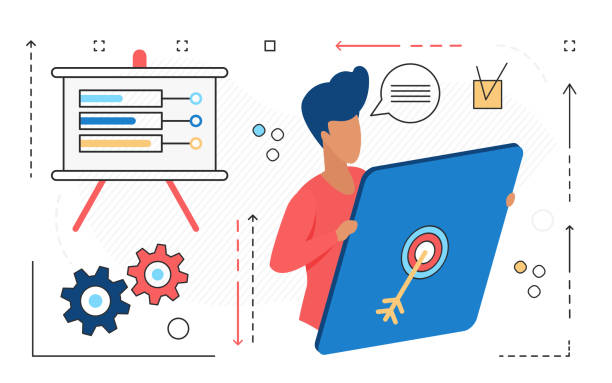
One of the most complex parts of multilingual website design is efficient content management and its translation process.
This goes beyond simply entrusting text to a translator; it requires a comprehensive strategy and an organized workflow.
The first step is preparing high-quality source content that is designed for easy translation from the outset.
This means using simple and clear language, avoiding complex and ambiguous terminology, and logically structuring the content.
The clearer the original text, the less ambiguity the translation process will encounter, leading to better results.
Choosing the translation method is also very important.
Are you using human translators, machine translation (with or without post-editing), or a combination of both? For sensitive and critical content such as product information, customer service, or marketing content, human translation by native and specialized translators in the relevant field is the best option.
This ensures that the content is not only linguistically correct but also culturally appropriate and effective.
For large volumes of non-sensitive content like general blog articles, machine translation with human review can be an efficient and cost-effective solution.
The use of Translation Memories and Term Bases is highly recommended.
These tools help maintain terminology consistency, reduce translation time, and lower costs, as sentences or phrases that have been previously translated are not translated again.
Furthermore, a multilingual content management system (such as those discussed in the previous section) is essential for organizing and publishing translated content.
This system should allow for editing, updating, and archiving content in all languages and ensure that different language versions are always synchronized and up-to-date.
Workflow management, from submitting content for translation to final publication, should be automated or semi-automated to minimize human errors and increase efficiency.
Ultimately, multilingual website design requires a systematic approach to content management that encompasses initial planning through continuous publication and maintenance.
User Experience and User Interface in Multilingual Website Design

Regardless of the translated content, User Experience (UX) and User Interface (UI) play a vital role in the success of a multilingual website design.
The visual design and website interactions should be intuitive and comfortable for users from different cultures.
One essential point is language selection.
The language switcher should be easily discoverable and typically located in the top right or left corner (depending on text direction) of the website.
Using the language name instead of a country flag is preferred, as one language may be spoken in multiple countries (e.g., Spanish), and a flag can be misleading.
Text direction is another important consideration.
Languages like Persian, Arabic, and Hebrew are written from Right-to-Left (RTL), while most other languages are Left-to-Right (LTR).
Website design should automatically adjust the User Interface (UI) orientation (such as text alignment, menu direction, and button placement) based on the selected language.
This goes beyond merely changing text; it involves mirroring the entire layout to maximize readability and user comfort.
Additionally, the space required for text must be considered; some languages may need more space to express a concept (for example, German is often longer than English), and the design should provide enough room for text expansion without disrupting the layout.
Cultural aspects such as colors, images, and symbols must also be considered.
Colors have different meanings in different cultures; what symbolizes joy in one culture might symbolize mourning in another.
Therefore, carefully selecting visual elements that are appropriate and positively perceived by all audiences is crucial.
Responsive design is also vital to ensure a consistent user experience across different devices.
Ultimately, multilingual website design that pays special attention to UX and UI is not only functionally superior but also conveys a sense of respect and consideration to users, which significantly helps strengthen the brand and increase conversion rates.
This is an art and a science that must be performed with precision and awareness.
Choosing the Best Hosting Strategy for Multilingual Websites
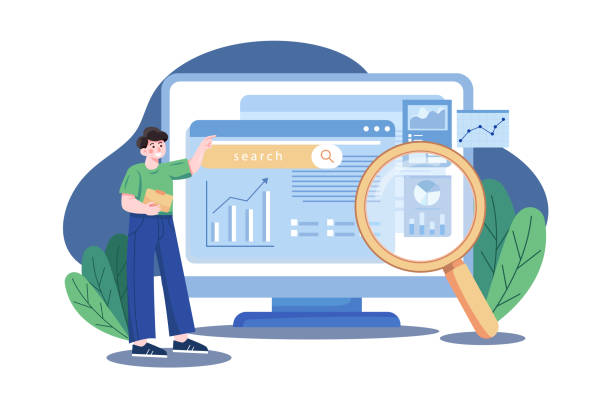
When it comes to multilingual website design, choosing the right hosting strategy can significantly impact the website’s performance, speed, and user experience worldwide.
A multilingual website targets diverse audiences from different geographical regions, so the server location and its proximity to users are of particular importance.
One of the most common approaches is to use a Content Delivery Network (CDN).
CDNs store cached versions of your website content on multiple servers across the globe.
When a user accesses your website, the content is delivered from the CDN server closest to them, which significantly increases loading speed and improves the user experience, especially for users accessing the site from remote regions.
Another option is to use Cloud Hosting.
Platforms like AWS, Google Cloud, or Microsoft Azure allow you to deploy your servers in various data centers worldwide.
This flexibility enables you to distribute resources based on your audience’s needs and reduce latency caused by geographical distance.
Cloud hosting also offers high scalability, which is very beneficial for websites with variable or growing international traffic.
Did you know that even a one-second delay in page loading can significantly increase the bounce rate?
Finally, for websites with very high traffic volume in a specific region, local dedicated servers in that country might be the best option.
This not only reduces latency but can also aid local SEO, as search engines may prefer websites whose servers are located in the same country as the audience.
The decision regarding the hosting strategy should be based on budget, projected traffic volume, and the geographical location of the primary audience.
A multilingual website design supported by a strong hosting strategy will provide an unparalleled experience for global users.
Below is a table of hosting options for multilingual sites and their benefits:
| Hosting Type/Strategy | Advantages | Disadvantages |
|---|---|---|
| Content Delivery Network (CDN) | Increased global loading speed, reduced load on the main server, improved SEO. | Additional cost, initial setup complexity. |
| Cloud Hosting | High scalability, flexibility in choosing server location, stability. | Variable cost based on consumption, requires more technical knowledge. |
| Local Dedicated Servers | Best performance for a specific region, strong support for local SEO. | High cost, geographical limitation, requires server management. |
Security and Maintenance of Multilingual Websites

After implementation and launch, the security and maintenance of a multilingual website are as important as its initial design.
As the website expands to international markets, the level of cyberattacks and security threats can also increase.
Therefore, implementing strong security protocols and regular maintenance is essential to protect user data and website integrity.
One fundamental measure is using HTTPS and SSL/TLS certificates to encrypt all communications between users and the server.
This not only ensures data security but also plays a positive role in SEO.
Regular updates of the CMS, plugins, themes, and system core are of high importance.
Developers constantly release security patches to address discovered vulnerabilities.
Failure to update can leave your website vulnerable to cyberattacks.
This issue is doubly important for a multilingual website design that may use more plugins for language management.
Also, implementing a Web Application Firewall (WAF) and Intrusion Detection Systems (IDS) can help identify and prevent attacks.
Did you know that many cyberattacks occur due to weaknesses in security updates?
Regular backups of the entire website, including files and the database, are an undeniable necessity.
In the event of any security issue, technical error, or cyberattack, having an up-to-date backup can minimize recovery time and prevent the loss of critical information.
These backups should be stored in secure locations, preferably separate from the main server.
Monitoring server logs and suspicious activities is also important for early detection of security threats.
Successful multilingual website design is an ongoing process that requires continuous attention to security and maintenance aspects to ensure the website remains secure and reliable for all users worldwide.
Investing in security tools and hiring cybersecurity specialists can prevent irreparable damages.
Do you know that your website is the first impression customers have of your company? Boost your business’s credibility manifold with a powerful corporate website from RasawWeb!
✅ Custom and eye-catching design tailored to your brand
✅ Improved user experience and increased customer acquisition⚡ Get a free consultation!
Marketing and Advertising for Multilingual Websites
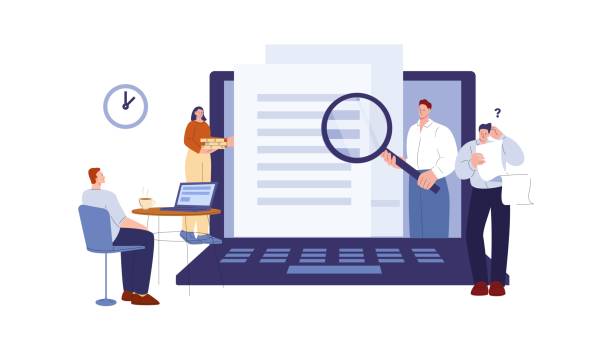
Once a strong and efficient multilingual website design is implemented, the next step is marketing and advertising to attract global audiences.
Single-language marketing strategies are usually insufficient for international markets and require localized and culturally adapted approaches.
The first step in international marketing is to conduct comprehensive market research for each country or region you intend to target.
This research should include competitor analysis, audience preferences, popular marketing channels, and even peak social media usage times in those regions.
Did you know that content publishing times on Twitter in Japan might be completely different from those in the United States?
Content marketing in multiple languages is one of the most powerful tools.
Producing localized content that is not only translated but also culturally and tonally appropriate for local audiences is highly effective.
This includes blogs, videos, infographics, and even podcasts.
Search Engine Marketing (SEM) campaigns, including Pay-Per-Click (PPC) on Google and other local search engines (such as Yandex in Russia or Baidu in China), should be implemented with native keywords and localized ad copy.
Social media marketing should also be tailored to popular platforms in each country (for example, WeChat in China, LinkedIn for B2B markets).
Collaborating with local influencers and organizing localized online or offline events can significantly impact awareness and engagement.
A multilingual website design without a comprehensive multilingual marketing strategy will not reach its full potential.
This investment in marketing is key to successful global expansion.
The Future of Multilingual Website Design and New Trends

The future of multilingual website design is rapidly evolving with the advent of new technologies and changes in user behavior.
One of the most significant trends taking shape is the increasing role of Artificial Intelligence (AI) in the translation and localization process.
Neural Machine Translation (NMT) is becoming increasingly accurate and natural, which can help accelerate the content translation process.
This is particularly beneficial for websites with large volumes of content or a need for continuous updates.
However, the importance of human review to maintain quality and cultural accuracy will remain.
Will there come a day when AI can understand all cultural nuances and human translators are no longer needed? This is a thought-provoking question.
Content adaptation based on geographical location and user behavior will also become a key trend.
Websites will be able to dynamically change content and even product offers based on the user’s language, location, and browsing history.
This level of personalization significantly improves the user experience and increases conversion rates.
Furthermore, with the increasing use of voice search and smart assistants, optimizing content for these types of searches in different languages will become increasingly important.
This means understanding how users ask questions in different languages and providing direct and concise answers.
Finally, support for less common and rarer languages may also gain more importance in the future, as businesses will seek out niche and less competitive markets.
This creates challenges in finding specialized translators and language resources but also opens up new opportunities for brands willing to invest in these areas.
Multilingual website design is no longer a luxury option but a necessity for any business that dreams of expanding into global markets.
The future belongs to those who are ready to use new technologies to communicate effectively with any user, anywhere in the world, in their own language.
Frequently Asked Questions
| Question | Answer |
|---|---|
| 1. What is multilingual website design? | The process of creating a website whose content is available in multiple languages so that users from around the world can interact with the site in their own language. |
| 2. Why should we make our site multilingual? | To expand market reach, attract international audiences, improve SEO in global search results, and enhance brand credibility and professionalism. |
| 3. What are the methods for implementing a multilingual site? | Using subdomains (e.g., fa.example.com), subdirectories (e.g., example.com/fa/), URL parameters (e.g., example.com?lang=fa), or country-code domains (e.g., .ir, .de). |
| 4. Is multilingual site SEO different? | Yes, it requires international SEO strategies such as using the hreflang tag, an appropriate URL structure for each language, and keyword research for each language. |
| 5. What considerations should be made when choosing languages? | Language selection should be based on target markets, audience demographics, and current website traffic analysis data. |
| 6. What are common problems in multilingual website design? | Problems related to SEO, translation quality, content management, Right-to-Left (RTL) and Left-to-Right (LTR) support, and user experience. |
| 7. What is the role of CMS in multilingual sites? | Modern Content Management Systems (CMS) (such as WordPress with multilingual plugins or Drupal) offer built-in features or powerful plugins for easy content management in multiple languages. |
| 8. How should content translation be done? | Translation should be performed by native and professional translators, not just machine translation, to ensure local tone, culture, and terminology are respected. |
| 9. How is language switching done on multilingual sites? | Typically, a Language Switcher is used in the header or footer of the site, allowing users to easily select their desired language. |
| 10. Is responsive design important for multilingual sites? | Yes, responsive design ensures that the site displays correctly on any device (mobile, tablet, desktop), which is crucial for international user access and SEO. |
And other services of RasawWeb Advertising Agency in the field of advertising
Smart Custom Software: Professional optimization for increasing website traffic using Google Ads management.
Smart Website Development: Professional solution for improving SEO ranking with a focus on custom programming.
Smart Social Media: Creative platform for improving customer behavior analysis with Google Ads management.
Smart Advertising Campaign: Creative platform for improving online growth using real data.
Smart Content Strategy: Designed for businesses seeking to increase sales through attractive UI design.
And over a hundred other services in the field of internet advertising, advertising consulting, and organizational solutions
Internet Advertising | Advertising Strategy | Advertorial
Resources
Challenges of Multilingual Website DesignGlobal Business Opportunities with Multilingual WebsitesKey SEO Tips for Multilingual WebsitesThe Importance of Localization in Multilingual Website Design
? RasawWeb Afarin Digital Marketing Agency, your reliable partner on the path to online growth!
For more information about our professional services, including WordPress website design, we are ready to take your business to the top.
📍 Tehran, Mirdamad Street, next to Bank Markazi, Southern Kazeroon Alley, Ramin Alley, No. 6

